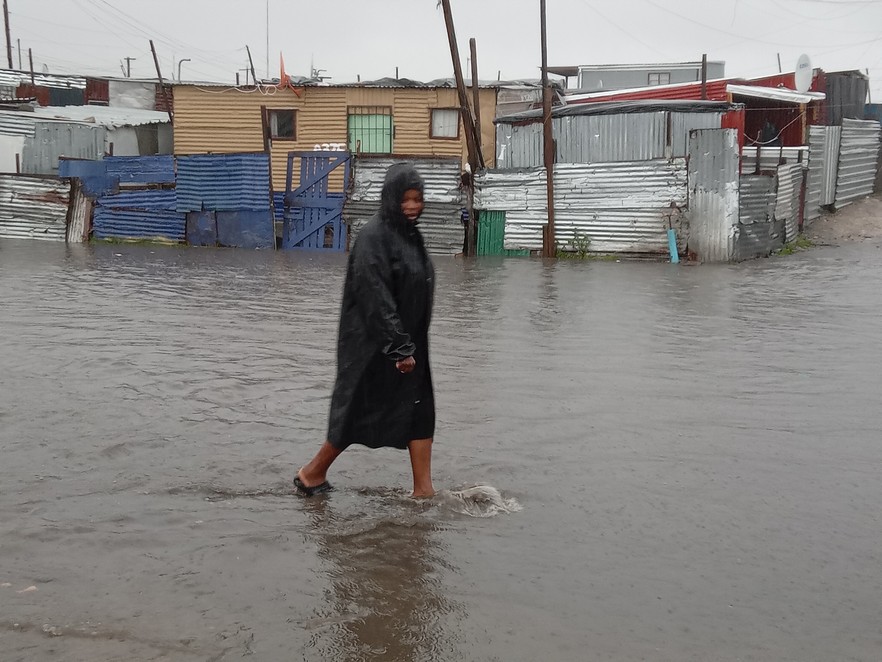South Africa’s cold front is here: 10 essential safety tips to stay warm and protected

Naija Boldness or Mzansi Chill? A cross cultural look at love across borders
As South Africa faces one of the most intense cold fronts of the season, temperatures are plunging, rainfall is increasing, and high-altitude regions are experiencing snowfall and gusty winds.
The South African Weather Service (SAWS) has issued alerts across multiple provinces, including the Western Cape, Free State, Eastern Cape, and KwaZulu-Natal. With these conditions posing threats to health, infrastructure, transport, and livelihoods, it is vital to be prepared.
Below are 10 essential, expert-backed safety tips to help South Africans stay warm, protected, and informed during this period of extreme winter weather.
1. Keep Indoors Whenever Possible
The safest place during severe weather is indoors. Avoid venturing outside during periods of heavy rain, snow, or strong winds, unless absolutely necessary. If you do need to go out—whether for work, school, or supplies—try to do so during daylight and avoid remote or poorly lit areas. Flooded roads, fallen power lines, and reduced visibility pose serious risks. Staying indoors not only keeps you safe from the cold but also protects you from weather-related accidents and infections.
2. Prepare for Load-Shedding and Power Outages
South Africa’s power grid is often under pressure during cold spells as demand for electricity spikes. This could lead to load-shedding or unexpected outages, especially in storm-affected areas. To prepare:
-
Fully charge your phones, power banks, and rechargeable lights.
-
Keep a stash of candles, matches, torches, and extra batteries.
-
If you use medical equipment that requires electricity, ensure you have backup support or alert local health authorities in advance.
-
Consider alternative power sources like gas cookers or solar-powered lamps—but use them safely and in well-ventilated areas.
3. Dress in Warm Layers and Stay Dry
Layering is one of the most effective ways to retain body heat. Start with a base layer (thermal or cotton), followed by insulating layers (wool or fleece), and top it with a waterproof jacket or coat. Gloves, beanies, scarves, and thick socks protect your extremities, which lose heat the fastest. Avoid wearing wet clothing, as it increases heat loss and can cause hypothermia, especially in children and the elderly.
4. Insulate Your Home to Keep Warm
Cold air enters the home through gaps, cracks, and thin windows. Use rolled-up towels or door snakes at the base of doors and windows to reduce draughts. Shut the doors of unused rooms to conserve warmth in living areas. Hang heavy curtains or blankets over windows, and layer your floors with carpets or rugs. You can also cover walls or windows with foil or bubble wrap to reduce heat loss. Even in modest homes, these simple tricks can significantly raise indoor temperatures.
5. Protect Livestock and Pets
In rural and farming communities, cold and wet weather can be fatal for livestock, especially small stock like sheep and goats. Move animals to barns, sheds, or areas shielded from wind and rain. Provide dry bedding, fresh water that won’t freeze, and sufficient feed. For pets, ensure their shelters are elevated, covered, and dry. Don’t leave animals chained or exposed in open spaces overnight—they’re as vulnerable to the cold as humans.
6. Drive Safely or Delay Non-Essential Travel
Road conditions during cold fronts can be treacherous—wet, icy, or flooded. If travel is unavoidable:
-
Check weather and traffic updates before departing.
-
Drive slowly, increase your following distance, and use headlights in low visibility.
-
Never drive through standing or fast-moving water—it can stall your car or sweep it away.
-
Keep emergency supplies in your vehicle (blanket, water, snacks, torch, jumper cables).
If you live in snow-prone regions like Underberg, Clarens, or Drakensberg, avoid mountain passes and steep roads until cleared.
7. Be Flood-Aware if You Live in Low-Lying Areas
Heavy rainfall during a cold front can quickly turn into flash floods, especially in areas with poor drainage. If you live near rivers, streams, or in informal settlements:
-
Know the quickest route to higher ground.
-
Elevate furniture and electronics off the ground if flooding is expected.
-
Keep important documents in waterproof bags.
-
Don’t attempt to walk or drive through floodwaters—depth and current can be deceptive.
Community leaders should activate alert systems and share evacuation plans in advance.
8. Support Vulnerable Groups: Elderly, Children, Sick, and Homeless
The cold hits vulnerable populations the hardest. Babies, the elderly, those with chronic illnesses, and the homeless are at increased risk of hypothermia, pneumonia, and other complications. Check on neighbours who may be alone or without heating. If you can, donate blankets, winter clothing, or food to shelters and community centers. Schools and clinics should ensure indoor heating is functional and children are appropriately clothed.
READ ALSO
Cold Front: These areas in South Africa are expected to be worst hit
What should South Africans know about this week’s cold front — and how can you stay safe?
9. Use Heating Devices Safely—Avoid Fire and Carbon Monoxide Risks
While it’s tempting to heat homes with coal stoves, paraffin heaters, or gas appliances, misuse can be deadly. Carbon monoxide from enclosed heaters can cause unconsciousness or death without warning. Always ensure:
-
Heaters are placed on flat, stable surfaces.
-
There’s good airflow—never use gas heaters in sealed rooms.
-
Children and pets are kept away from open flames or hot surfaces.
-
You switch off heaters before going to sleep.
Fire departments often see a rise in house fires during winter—don’t become a statistic.
10. Stay Informed Through Reliable Weather Updates
Always follow official updates from the South African Weather Service (SAWS), Disaster Management Centres, or local government social media channels. Avoid unverified WhatsApp messages or rumours that cause panic. The SAWS website and app provide accurate forecasts, alerts, and guidance. Staying informed means you can plan better, protect your family, and avoid last-minute emergencies.


